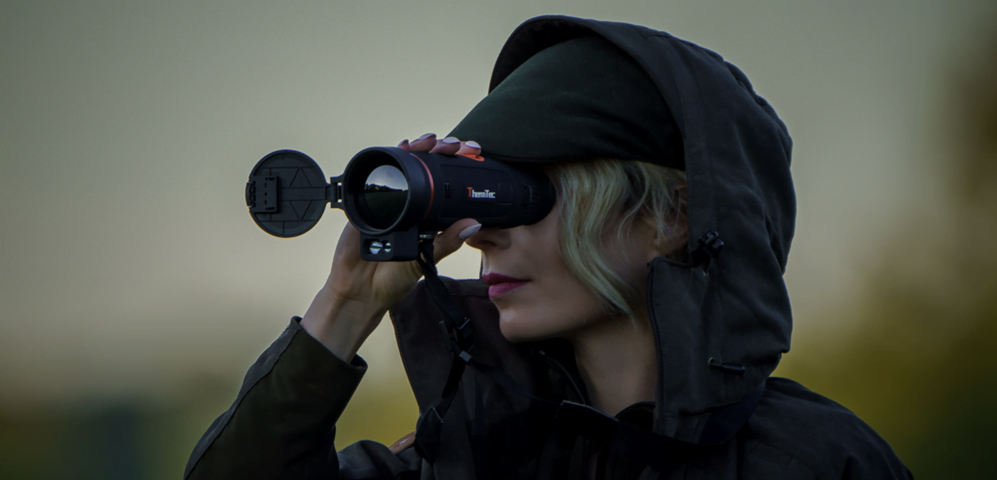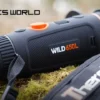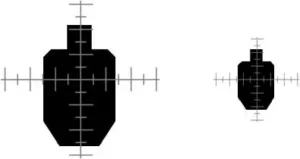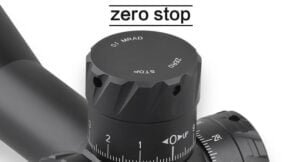Thermal imaging and night vision technologies, although both designed to enhance visibility in low-light conditions, operate based on different principles and are suitable for distinct scenarios.
Thermal imaging works by detecting infrared radiation (heat) emitted from objects and living beings. Every object emits some form of infrared energy as heat; thermal cameras capture this energy and convert it into an image that is visible to the human eye. The warmer an object is, the more radiation it emits. This technology creates images based on temperature differences, so it is extremely effective in complete darkness and can see through obscurants like smoke, fog, and haze.
Night vision, on the other hand, requires some amount of ambient light to function. It operates by taking available light (from the moon, stars, or nearby artificial sources) and amplifying it to make scenes visible to the human eye. This is achieved using image intensifier tubes that convert photons into electrons, amplify those electrons, and then convert them back into enhanced visible light. The imagery usually appears with a characteristic green tint due to the phosphor screen on which these electrons are projected.
Comparisons and Use Cases
The choice between thermal imaging and night vision depends largely on the environment and the task at hand:
- Night Vision: Ideal for conditions where there is some light available. It is less effective in absolute darkness unless supplemented with infrared illuminators. Night vision devices are popular among recreational users like campers and hikers, as well as in military operations during slightly lit conditions.
- Thermal Imaging: Superior in absolute darkness or when environmental conditions obscure visual clarity. It is invaluable for search and rescue operations, wildlife monitoring, and security enforcement, where heat differentiation can reveal hidden details irrespective of lighting conditions.
Each technology has its advantages depending on the operational requirements, making them indispensable tools in their respective fields for enhancing visibility where human vision falls short.
Thermal imaging provides numerous advantages for hunters, enhancing both the effectiveness and safety of their activities. Here’s a closer look at the specific benefits that thermal imaging offers to hunters, particularly when using devices like the ThermTec Wild series thermal imaging monocular:
Enhanced Detection
- Heat Signature Visibility: Thermal imaging allows hunters to see animals based on their body heat, which is particularly useful in environments where visibility is compromised by factors like foliage, darkness, or fog. This technology does not rely on visible light and can reveal the presence of animals even through obstacles that would normally conceal them.
Improved Target Identification
- Clear Differentiation: Unlike traditional night vision that requires some light to function and often only provides a green-tinted view, thermal imaging detects heat and provides a more distinct contrast between warm-bodied animals and their cooler surroundings. This sharply reduces the risk of misidentifying targets, which is crucial for ethical hunting practices.
Extended Range
- Greater Detection Distance: Thermal monoculars, such as the ThermTec Wild series, can detect heat signatures from much farther away than standard optical or night vision devices. This capability allows hunters to spot and track animals from greater distances, giving them a strategic advantage in planning their approach without disturbing the wildlife.
Features of the ThermTec Wild Series
- High-Resolution Imaging: Equipped with a highly sensitive thermal sensor (NETD≤18mK), the Wild series ensures detailed and clear images, which are essential for accurately identifying and tracking game.
- LRF Boost: The integration of a laser rangefinder with AI-enhanced technology allows for precise distance measurements and multi-target tracking, which can be critical when dealing with multiple animals or complex landscapes.
- One-Hand Operation: The ergonomic design is tailored for ease of use in the field, accommodating both left-handed and right-handed users, which enhances the user’s ability to react quickly and effectively in various hunting scenarios.
- Self-learning Image Correction: The AI-driven technology adapts and improves its image correction algorithms based on different environments, ensuring consistent image quality and stability across diverse conditions.
- Long Battery Life: Enjoy up to 10 hours of use per charge with options to recharge on-device or quickly swap batteries for extended freedom.

Overall, thermal imaging technology like that found in the ThermTec Wild series significantly enhances the hunting experience by improving detection, identification, and engagement capabilities, making it a valuable tool for hunters aiming to maximize their efficiency and success in the field.
Lorem ipsum dolor sit amet, consectetur adipiscing elit. Ut elit tellus, luctus nec ullamcorper mattis, pulvinar dapibus leo.









Add comment